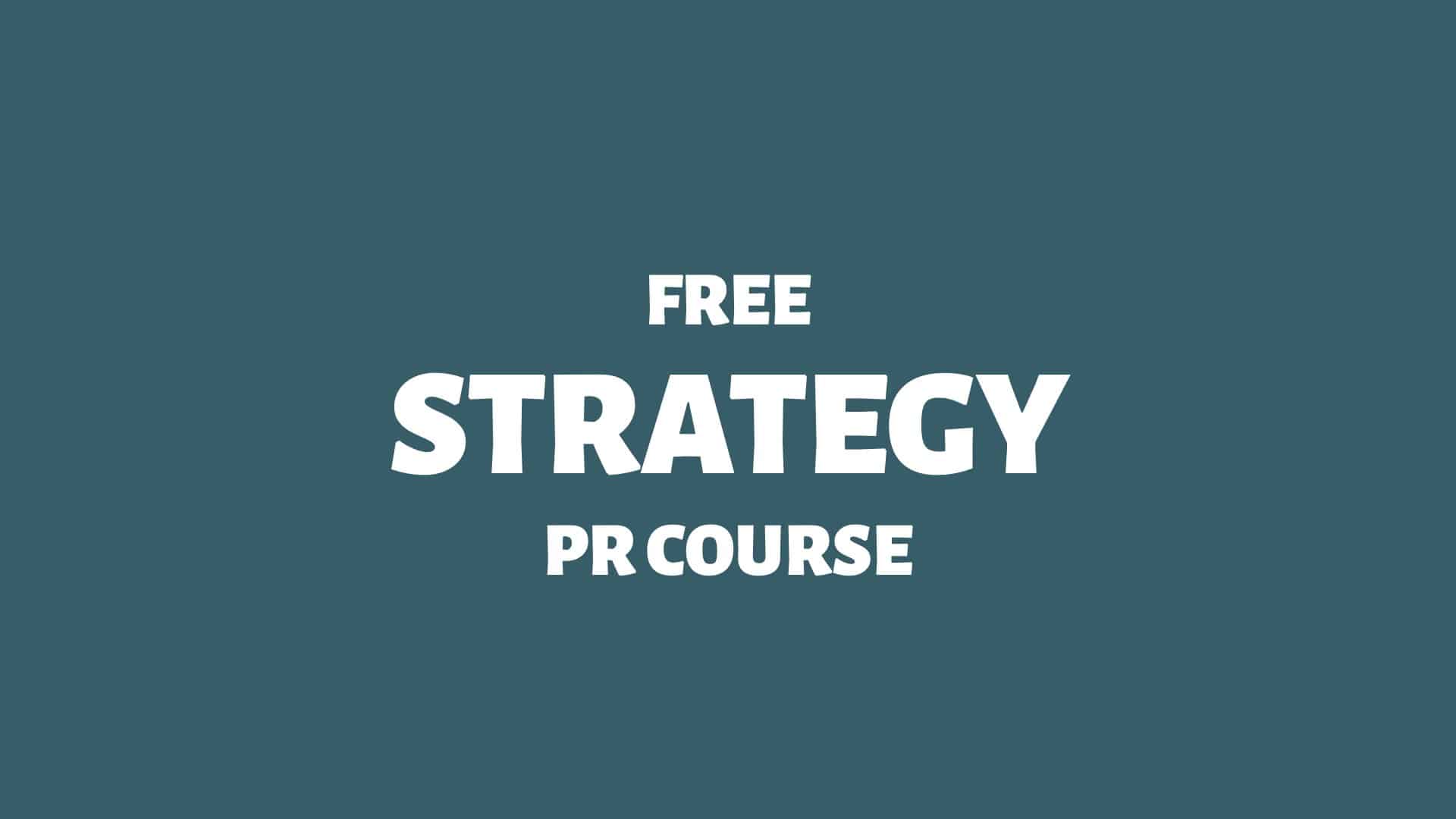This is Steve Bannon’s muzzle velocity PR strategy.
It seems Donald Trump might be using Steve Bannon’s “muzzle velocity” PR strategy by “flooding the zone” to make news media choke on its own media logic.
How does it work?
Why does it work?
Here we go:
The Muzzle Velocity PR Strategy
Steve Bannon is a far-right political strategist, media executive, and former chief strategist to Donald Trump. A key architect of Trump’s 2016 presidential victory, Bannon leveraged populist, nationalist, and anti-establishment rhetoric to mobilise disaffected voters.

Here’s what Steve Bannon told PBS “Frontline” in 2019:
Steve Bannon: The opposition party is the media. And the media can only, because they’re dumb and they’re lazy, they can only focus on one thing at a time…
All we have to do is flood the zone. Every day we hit them with three things. They’ll bite on one, and we’ll get all of our stuff done. Bang, bang, bang. These guys will never — will never be able to recover. But we’ve got to start with muzzle velocity. So it’s got to start, and it’s got to hammer, and it’s got to —
Michael Kirk: What was the word?
Bannon: Muzzle velocity.
As the executive chairman of Breitbart News, Bannon helped shape the alt-right’s influence on Republican politics. In the White House, Bannon pushed “America First” policies, clashed with establishment Republicans, and was instrumental in Trump’s hardline immigration stance and economic nationalism.
However, Bannon’s tenure was short-lived — he was ousted in August 2017 following internal power struggles.
Despite falling out with Trump (who later called him “Sloppy Steve”), Bannon remained an influential voice in right-wing politics, backing nationalist movements globally and facing legal trouble, including an indictment for fraud related to a border wall fundraising campaign.
Donald Trump: Flood the Zone
According to Ezra Klein, a New York Times columnist and host of The Ezra Klein Show podcast, Bannon’s muzzle velocity PR strategy is in full effect for the first two weeks of Donald Trump’s second term.
“Muzzle velocity. Bannon’s insight here is real. Focus is the fundamental substance of democracy. It is particularly the substance of opposition. People largely learn of what the government is doing through the media — be it mainstream media or social media. If you overwhelm the media — if you give it too many places it needs to look, all at once, if you keep it moving from one thing to the next — no coherent opposition can emerge. It is hard to even think coherently.
Donald Trump’s first two weeks in the White House followed Bannon’s strategy like a script. The flood is the point. The overwhelm is the point. The message wasn’t in any one executive order or announcement. It was in the cumulative effect of all of them. The sense that this is Trump’s country now. This is his government now.“
Source: Inside Story 1Klein, E. (2025, February 7). Don’t believe him. Inside Story. https://insidestory.org.au/dont-believe-him/
An old publisher adage goes:
“If it bleeds, it leads.“
What, then, if everything bleeds?
According to Clay Shirky, an American writer, consultant, and teacher on the social and economic effects of Internet technologies and journalism, there is no information overload—only filter failure. 2Asay, M. (2025). Shirky: Problem is filter failure, not info overload. CNET. https://www.cnet.com/culture/shirky-problem-is-filter-failure-not-info-overload/
Can established media get flooded to the point of failure?
Media Logic and Filter Failure
Classic media logic is hypothesised to influence the news media in the following ways: 3Nord, L., & Strömbäck, J. (2002, January). Tio dagar som skakade världen. En studie av mediernas beskrivningar av terrorattackerna mot USA och kriget i Afghanistan hösten 2001. … Continue reading
In Steve Bannon’s muzzle velocity PR strategy, flooding the news means having the news media choke on its media logic.
The Triangulation PR Strategy
Donald Trump’s presidency is an extraordinary case study. Few organisations could flood the media the way a sitting president can. Striving to influence the media’s agenda is a well-known PR strategy, but torpedoing the entirety of the traditional news media must be seen as a fringe case.
A serious fringe case, but fringe nonetheless.
As a seasoned PR professional, I am familiar with similar public affairs strategies, albeit on smaller scales. One such strategy is the triangulation PR strategy.
The triangulation PR strategy = while the news media and the opposition are pushing their agendas, a political interest could change the narrative by intentionally leaking a “saved” story that will either overshadow competing agendas — or drown out negative publicity, even.
However, as with the muzzle velocity PR strategy, I would never condone the triangulation PR strategy. Both are card-stacking, grey-hat techniques used to obfuscate and confuse.
Steve Bannon, already infamous for his role in the Cambridge Analytica scandal, still influences the news climate.
If “fake news” was part one, muzzle velocity is part two.
Learn more: The Muzzle Velocity PR Strategy
The Cambridge Analytica Scandal
Cambridge Analytica was founded in 2013. Their business model was similar to Blue State Digital’s, focusing on data mining, brokerage, and analysis — and some consulting. 4This is similar to the social media intelligence agency Whispr Group, where I served as the COO from 2010 to 2013.
The Cambridge Analytica scandal began with Alexsander Kogan, a researcher at the University of Cambridge, who approached Facebook and asked to collect data for academic purposes.
For his study, Kogan launched a Facebook app called Your Digital Life. The app was used by 270,000 Americans permitted to pull data from their friends, which allowed the app to mine data from 87 million users. 5Cambridge Analytica. (2024, May 13). In Wikipedia. https://en.wikipedia.org/wiki/Cambridge_Analytica
Soon, this data ended up in Cambridge Analytica’s database.
Facebook, Targeted Ads, and Data Mining
It wasn’t only the data-mining companies that could sense potential. So did the social networking sites.
Segmenting people based on their communicative behaviour is more powerful than traditional demographic segmentation. 6Silfwer, J. (2015, June 11). The Publics in Public Relations. Doctor Spin | The PR Blog. https://doctorspin.net/publics-in-public-relations/
As Facebook went public in 2012, it took the lead and embarked on an aggressive journey to monetise social media usage.
In short, Facebook went hard for the advertising dollar. It’s not a modern monetisation model, but with so much user data, Facebook transformed the programmatic ad targeting industry.
With Facebook moving forward aggressively with loosely regulated data mining practices, Cambridge Analytica decided to take a shortcut.
Trump’s Presidential Bid in 2016
Among Cambridge Analytica’s founders and investors was the conservative pundit Steve Bannon. Bannon divested his holdings in the company in April 2017 when he was appointed White House Chief Strategist. Still, at that point, he had already been working as the CEO for Donald Trump’s presidential bid in August 2016.
And what software did Trump’s campaign use to persuade the American opinion to vote for Trump? Cambridge Analytica, of course.
With large data volumes on various online behaviours of US citizens, Cambridge Analytica profiled voters matching their psychographic behaviours.
To run a US presidential campaign on the back of illegally (and unethically) acquired data was, of course, a scandal in its own right.
The Power of Psychographic Analysis
Psychographic tools (such as Myers-Briggs and The Big Five Aspects Scale) allow people to be assigned to groups based on their past behaviour and predicted future activity.
This could have provided the Trump campaign answers on who to target and how to trigger them psychologically.
“Cambridge Analytica’s use of data analytics and microtargeting in political campaigns, combined with psychological tactics, helped secure Donald Trump’s victory in the 2016 U.S. Presidential Election.“
Source: Proceedings of the 1st Pedagogika International Conference on Educational Innovation 7Gatra, A. (2023). The Power of Data Analytics and Microtargeting in Political Campaigns, Cambridge Analytica Strategy, Donald Trump Victory the 2016 U.S. Presidential Election. Proceedings of … Continue reading
In the end, the whole scandal surrounding Cambridge Analytica brought the general public and politicians one step closer to understanding the immense power of big data.
The Cambridge Analytica Aftermath
Using a seemingly harmless personality quiz app, Cambridge Analytica collected users’ and friends’ data, exploiting Facebook’s lax privacy policies.
The firm, backed by Steve Bannon and funded by billionaire Robert Mercer, used this data to craft highly personalised, manipulative political ads, notably aiding Donald Trump’s 2016 campaign and the Brexit Leave campaign.
When whistleblower Christopher Wylie exposed these practices, global outrage over Big Tech’s role in election manipulation grew.
It led to Facebook CEO Mark Zuckerberg testifying before Congress, a $5 billion fine for Facebook, and a broader reckoning on data privacy and digital propaganda.
In the wake of the scandal, Cambridge Analytica closed its operations in 2018. Several executives moved to Emerdata, which is owned by the same parent company and resides in the same building in London.
Learn more: The Cambridge Analytica Scandal

THANKS FOR READING.
Need PR help? Hire me here.

What should you study next?
Spin Academy | Online PR Courses

Spin’s PR School: Free Strategy PR Course
Unlock the power of strategic public relations with this free Strategy PR Course. Elevate your skills and boost your career today.
Public Relations Strategy 101
Public Relations Strategies
Grey-Hat PR Strategies
Learn more: All Free PR Courses
💡 Subscribe and get a free ebook on how to get better PR.

Annotations
| 1 | Klein, E. (2025, February 7). Don’t believe him. Inside Story. https://insidestory.org.au/dont-believe-him/ |
|---|---|
| 2 | Asay, M. (2025). Shirky: Problem is filter failure, not info overload. CNET. https://www.cnet.com/culture/shirky-problem-is-filter-failure-not-info-overload/ |
| 3 | Nord, L., & Strömbäck, J. (2002, January). Tio dagar som skakade världen. En studie av mediernas beskrivningar av terrorattackerna mot USA och kriget i Afghanistan hösten 2001. ResearchGate; Styrelsen för psykologiskt försvar. https://www.researchgate.net/publication/271014624_Tio_dagar_som_skakade_varlden_En_studie_av_mediernas_beskrivningar_av_terrorattackerna_mot_USA_och_kriget_i_Afghanistan_hosten_2001 |
| 4 | This is similar to the social media intelligence agency Whispr Group, where I served as the COO from 2010 to 2013. |
| 5 | Cambridge Analytica. (2024, May 13). In Wikipedia. https://en.wikipedia.org/wiki/Cambridge_Analytica |
| 6 | Silfwer, J. (2015, June 11). The Publics in Public Relations. Doctor Spin | The PR Blog. https://doctorspin.net/publics-in-public-relations/ |
| 7 | Gatra, A. (2023). The Power of Data Analytics and Microtargeting in Political Campaigns, Cambridge Analytica Strategy, Donald Trump Victory the 2016 U.S. Presidential Election. Proceedings of the 1st Pedagogika International Conference on Educational Innovation, PICEI 2022, 15 September 2022, Gorontalo, Indonesia. https://doi.org/10.4108/eai.15 – 9‑2022.2335937 |


